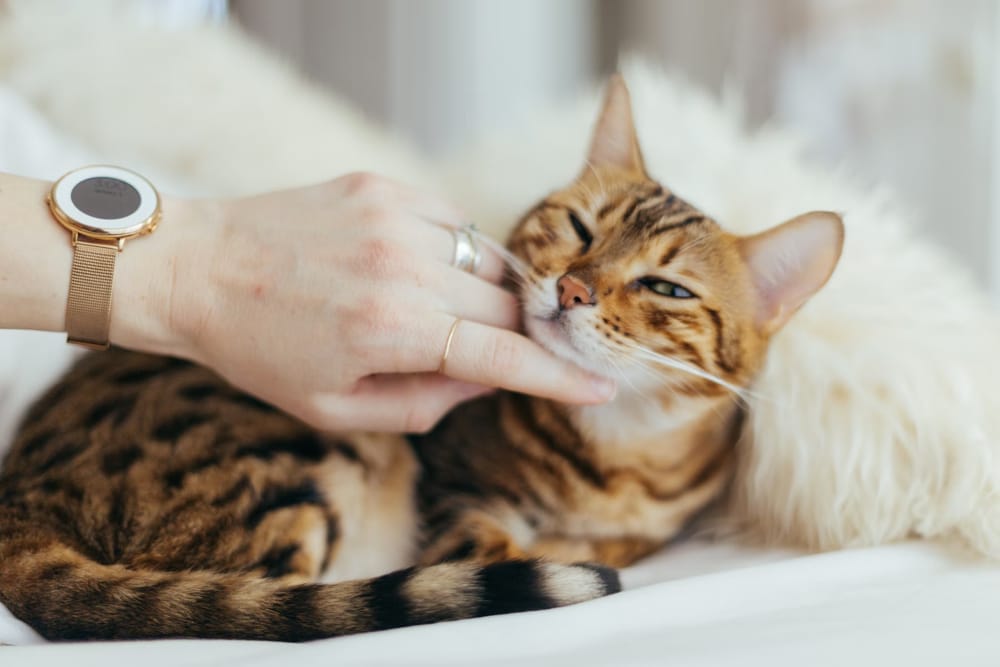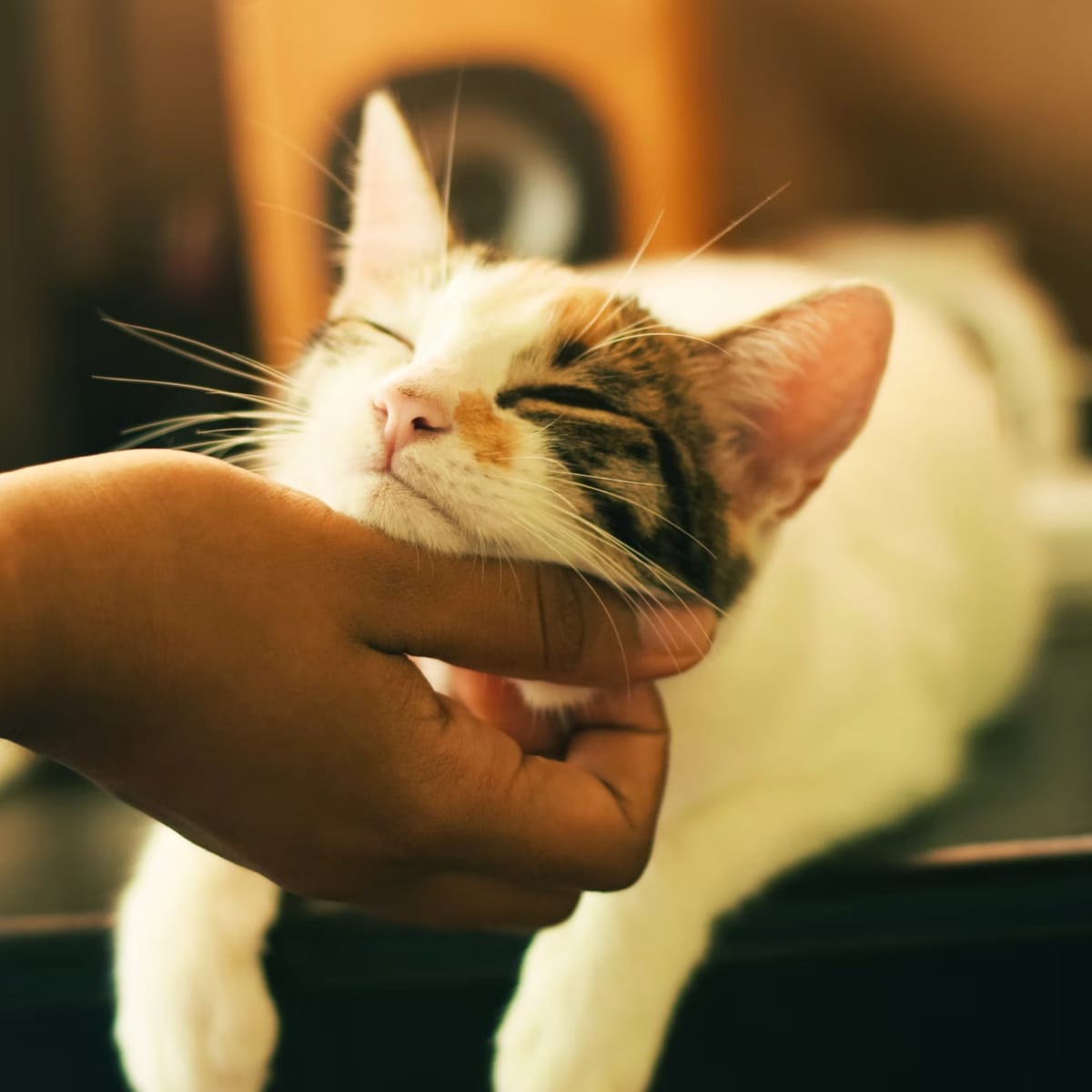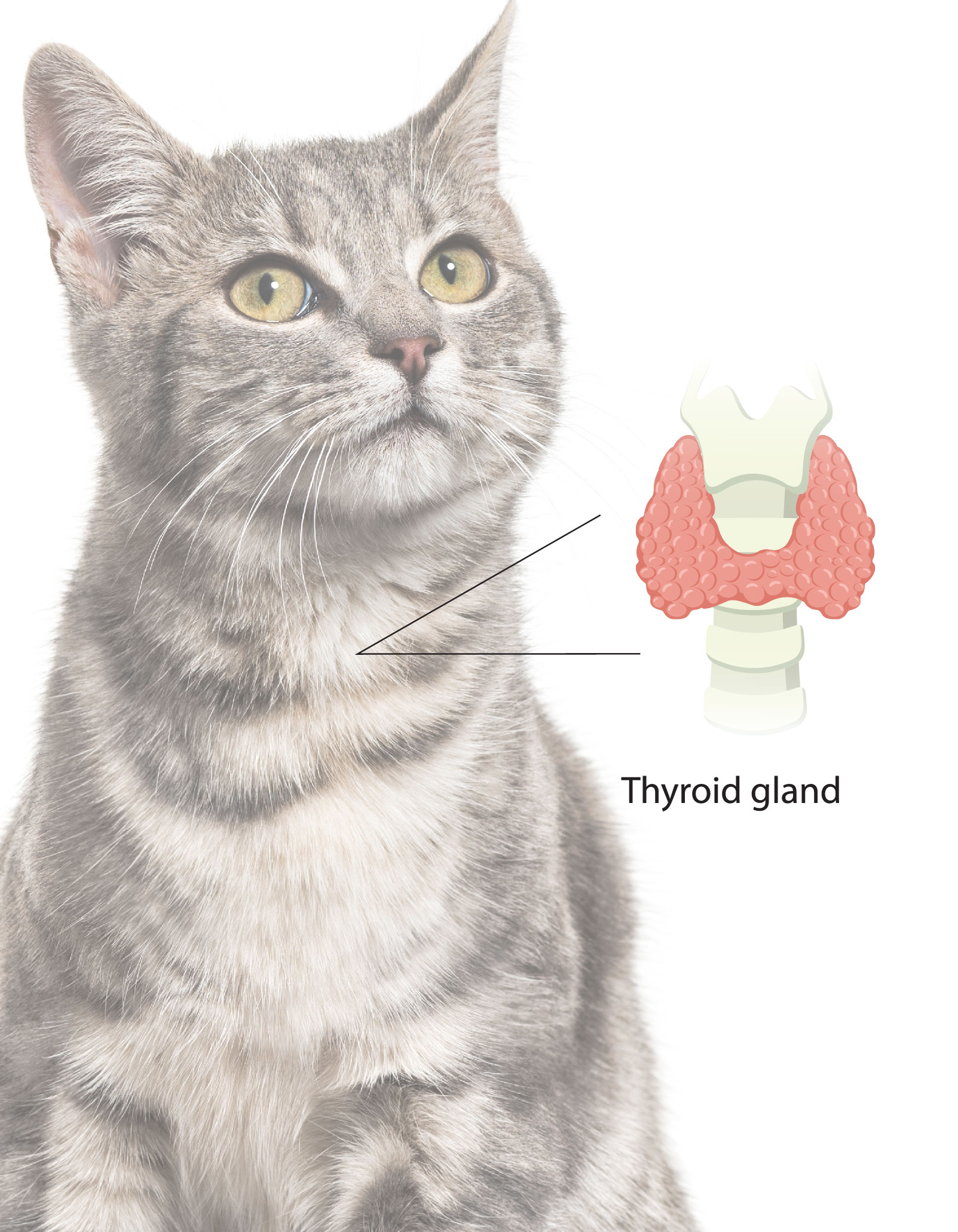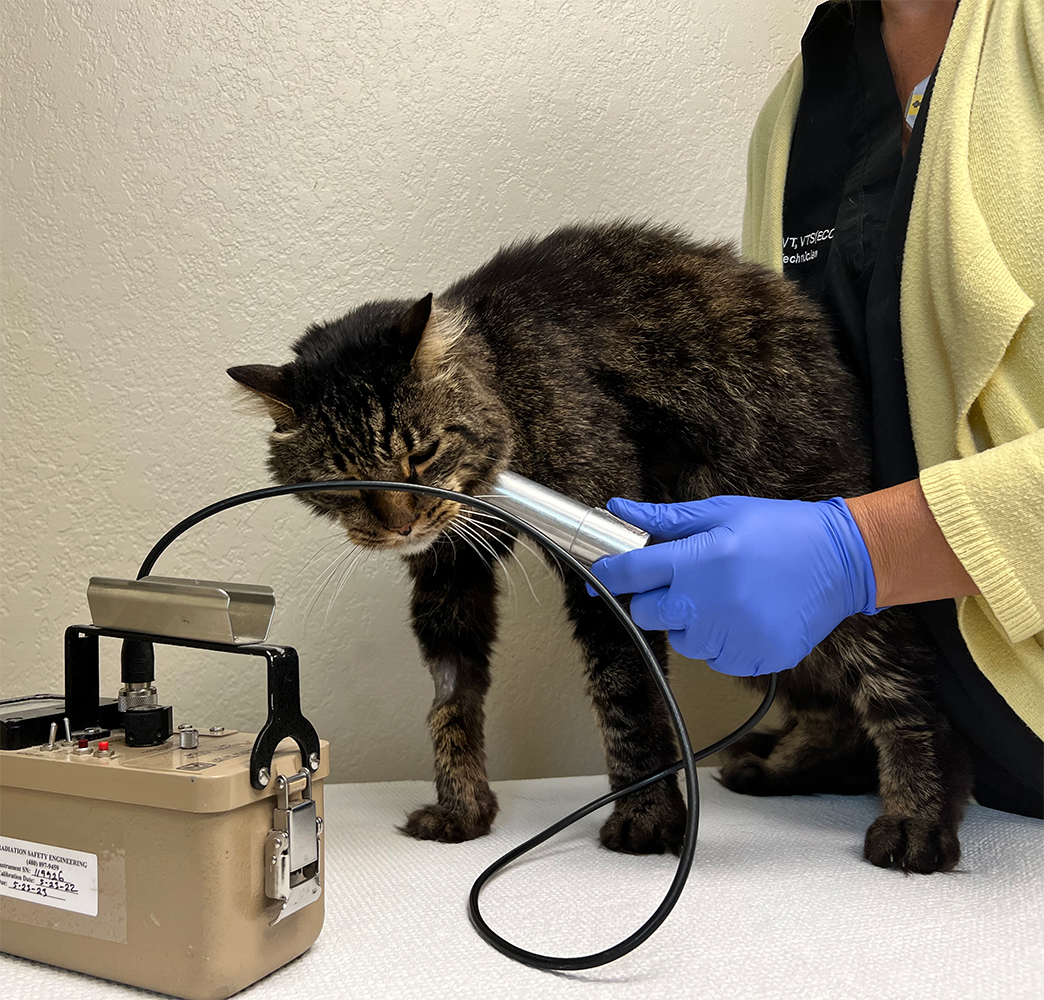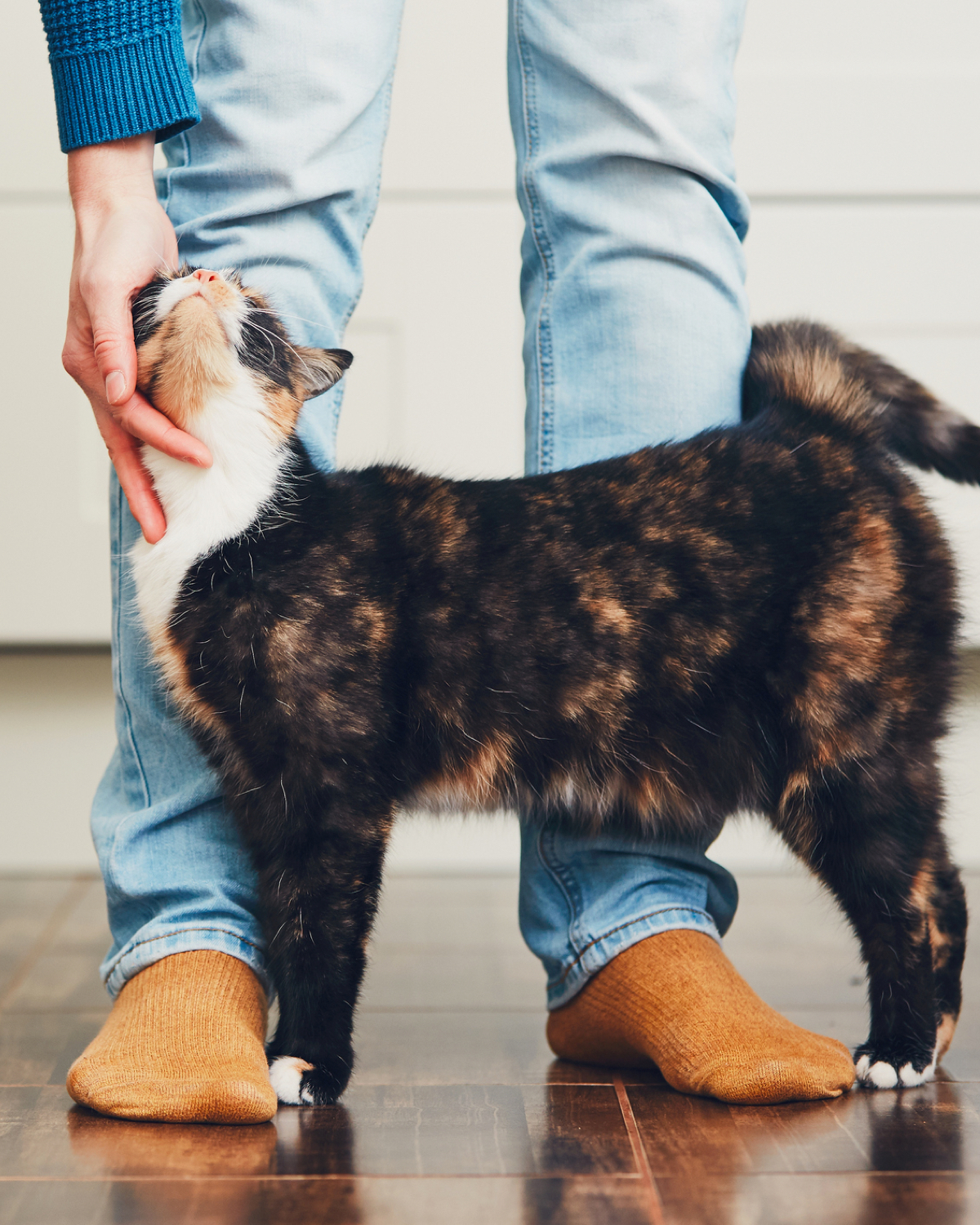Radioactive Iodine Therapy
Expertise
Our Expertise in Radioactive Iodine Therapy
Nearly 10 percent of cats over 10 years old will experience hyperthyroidism. Radioactive iodine (I-131) is the treatment of choice for hyperthyroid feline patients that cannot tolerate alternative protocols. Additionally, I-131 may be preferred by feline owners who prefer a single treatment regime over daily medication administration.
How Does I-131 Works
A cat with hyperthyroidism has a thyroid gland that produces too many hormones. A key symptom of feline hyperthyroidism is weight loss despite increased appetite and thirst, alongside increased urination. Veterinarians use radioactive iodine, or I-131, to stop unregulated thyroid glands. Immediately after administration, the radioactive iodine is absorbed by the hyperfunctioning thyroid tissue. What’s special about this therapy is that I-131 selectively destroys the tumor while leaving normal thyroid tissue undamaged. The rest of the feline body is unaffected because the thyroid gland is the only tissue in the body that accumulates iodine. After I-131 treatment, the thyroid function typically returns to normal in 1-3 months.
What to Expect with I-131 Treatment
The majority of cats (90%) need only one treatment of radioactive iodine to be considered cured of hyperthyroidism. During treatment, most cats are hospitalized from 4-7 days, dependent on the dose of radioactive iodine administered and the excretion rate of the iodine. Once admitted, your cat cannot be discharged until his/her radiation exposure rate is at the legal, safe limit. This is for the safety of you and your family members. No visitation is allowed because of radiation safety regulations. Cats are required to be up-to date-on vaccinations for upper respiratory viruses before I-131 treatment.

Contact
Need further help?
Our team of experts is always here to provide further assistance in answering any questions to make this the smoothest process.

